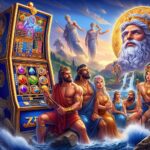Slot Online: Keuntungan Finansial dan Sosial
Slot Online: Keuntungan Finansial dan Sosial merupakan judul dari sebuah artikel kami kali ini. Kami ucapkan Selamat datang di businesshala.com, Mengungkap Kisah Sukses di Balik Gulungan Slot Online. Pada kesempatan kali ini, kami masih bersemangat untuk membahas soal Slot Online: Keuntungan Finansial dan Sosial. Pendahuluan Dalam beberapa tahun terakhir, slot online telah menjadi fenomena yang […]

















